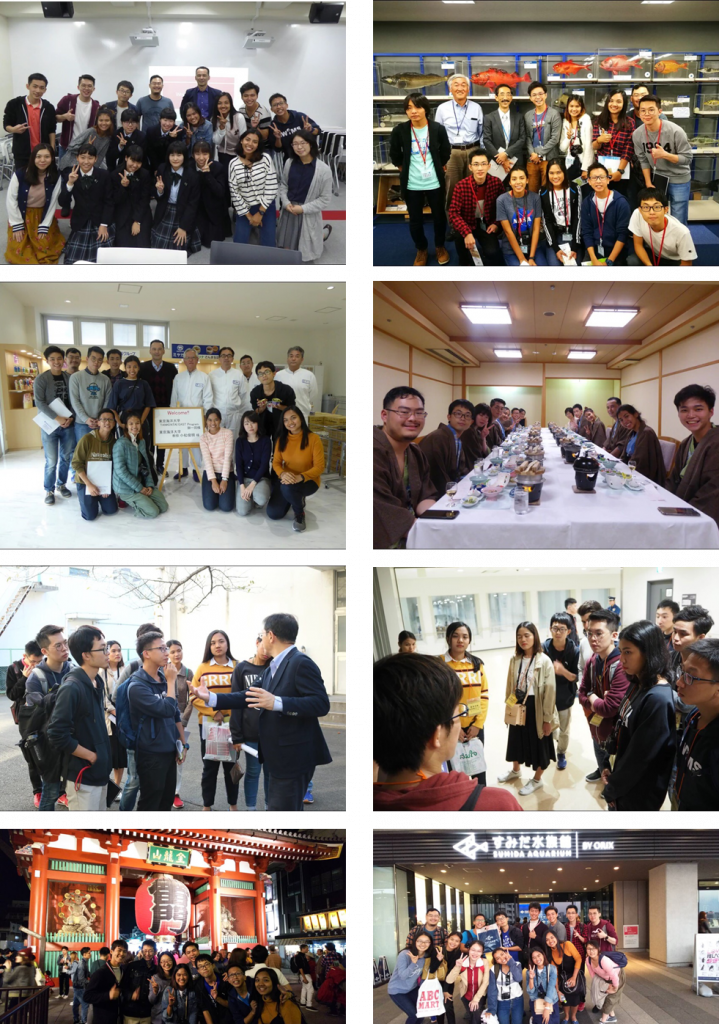Experiences gained from the 2018 IONTU-TUMSAT students exchange in Tokyo, Japan
Ching-Wei Wang and Chao-Yuan Yang
The students exchange activity between IONTU and TUMSAT has been held for four years at both IONTU and TUMSAT. Under this mutual activity, we thank Professors Sen Jan, Yi-Jay Chang, Huei-Ting (Tina) Lin, and Vianney Denis for recommending us to visit TUMSAT in October 2018. We are also grateful to Tokyo University of Marine Science and Technology (TUMST), Professor Toshiaki Komatsu, Yumiko Sato, Maya Sato, and their students for this wonderful program (see the photos below).
In addition to visiting Japan’s 311 earthquake-stricken area (Kesennuma City) to rebuild the disaster, we went to TUMST, Bunkyo Gakuin University High School, National Research Institute of Fisheries Science (NRIFS), Japan agency for marine-earth science and technology (JAMSTEC ), Kesennuma Fish market, Hota Port, The Tokyo Rinkai Disaster Prevention Park, Toyosu Fish Market and so on.
We visited the recovery situation in the tsunami-stricken areas. Local commentators led us to the tsunami-stricken areas and shared many stories at the time. Both residents and local industries were greatly affected. In addition, we visited the shark museum, fishing port, fish market, and fish cannery factory in the affected area. These experiences allowed us to learn how local people were trying to rebuild their lives after the disaster and how to rebuild their past culture. And the course of their conversation, felt the unyielding fighting spirit, this probably is one of the important reasons they can rebuild here. At TUMST and high school, we shared Taiwan’s special attractions and culture. Moreover, we also introduced the research directions of each group of IONTU and the research of our master’s topics and laboratories. In addition, we had deeper conversation with their students from group discussions. And several professors enthusiastically introduced us to the 311 tsunami studies, such as the distribution of sediments after the tsunami and the numerical simulation of the evacuation route. Researchers at NRIFS and JAMSTEC had a great introduction to Japanese fisheries and marine science research in Japan and we saw many amazing experimental equipment. Also, we went to Hota Fishing Port to go out with the local fishermen to learn about the local fishing process.
In addition, this trip to Tokyo includes students from Taiwan, Thailand, Hong Kong, and Singapore. The research areas range from marine areas, food chemistry to diving and sightseeing. We enjoyed and learn our discussion. Japanese students took us to visit various attractions in Tokyo and had a deeper understanding and discussion of the culture of Japan and other countries. This trip to Japan is of great significance to me, we have the opportunity to communicate with them, and we look forward to meeting them again, whether in Japan, Taiwan or other countries.











